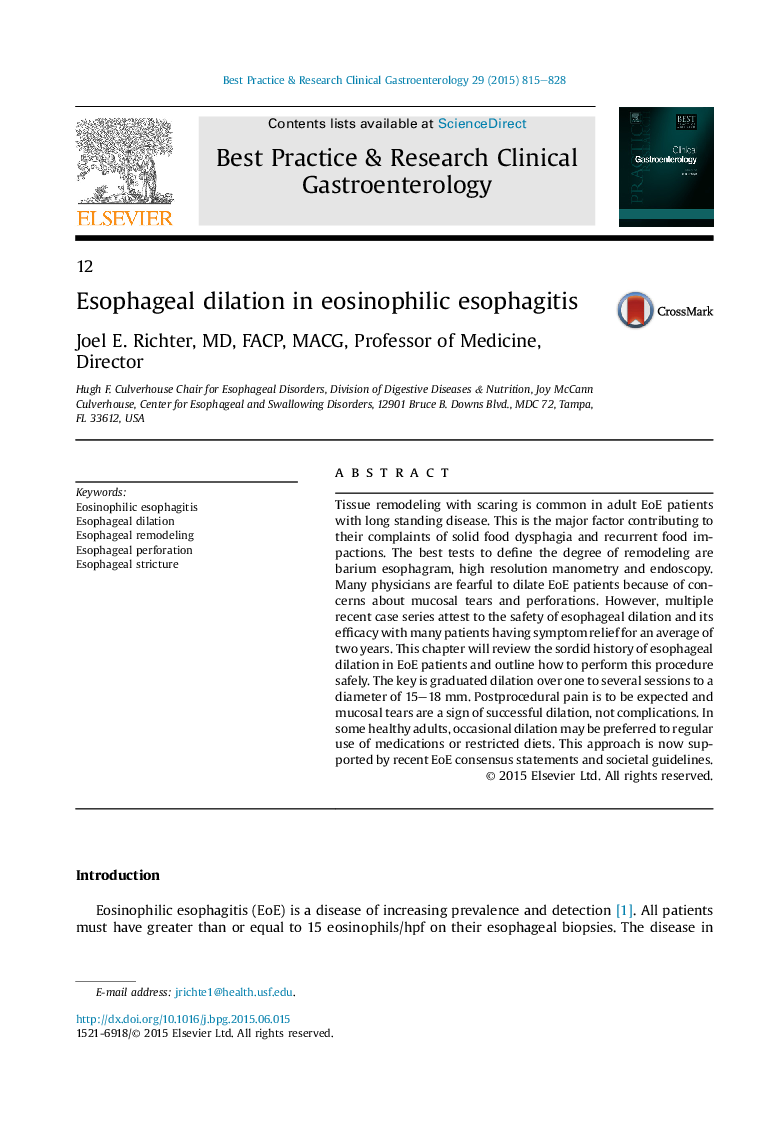| Article ID | Journal | Published Year | Pages | File Type |
|---|---|---|---|---|
| 3254060 | Best Practice & Research Clinical Gastroenterology | 2015 | 14 Pages |
Tissue remodeling with scaring is common in adult EoE patients with long standing disease. This is the major factor contributing to their complaints of solid food dysphagia and recurrent food impactions. The best tests to define the degree of remodeling are barium esophagram, high resolution manometry and endoscopy. Many physicians are fearful to dilate EoE patients because of concerns about mucosal tears and perforations. However, multiple recent case series attest to the safety of esophageal dilation and its efficacy with many patients having symptom relief for an average of two years. This chapter will review the sordid history of esophageal dilation in EoE patients and outline how to perform this procedure safely. The key is graduated dilation over one to several sessions to a diameter of 15–18 mm. Postprocedural pain is to be expected and mucosal tears are a sign of successful dilation, not complications. In some healthy adults, occasional dilation may be preferred to regular use of medications or restricted diets. This approach is now supported by recent EoE consensus statements and societal guidelines.
